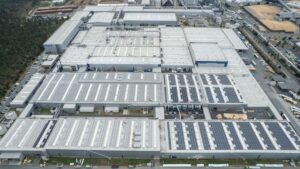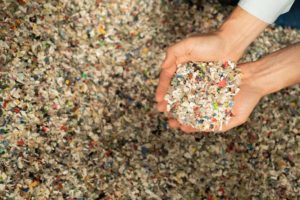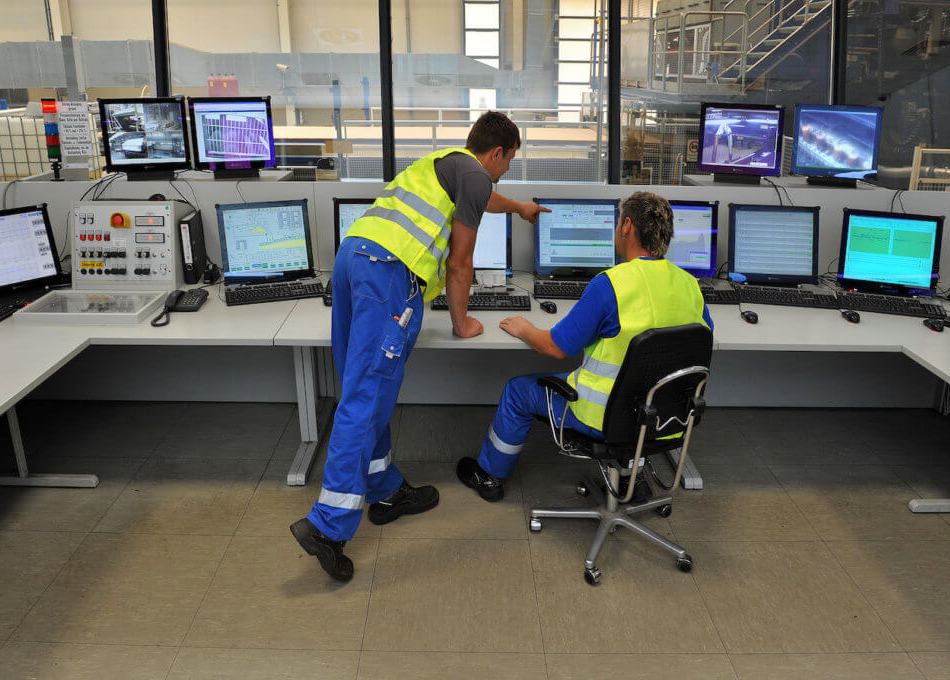Baruth / Mark. Vor 20 Jahren, im Herbst 2001, eröffnete die CLASSEN Gruppe ihr Werk in Baruth (Brandenburg). Begonnen wurde damals mit 120 Mitarbeitern. Heute ist es das größte zusammenhängende Laminatwerk der Welt. Rund 850 Mitarbeiter produzieren in Baruth bis zu 80 Millionen Quadratmeter hochwertige Laminatböden im Jahr für den weltweiten Markt. Das bedeutet, dass alle sieben Sekunden Laminat in der Größe eines 20-Quadratmeter-Wohnzimmers die Produktion verlässt. Bis zum Jahr 2020 wurde die erste Milliarde Quadratmeter Laminat produziert, das ist eine Menge, mit der man die gesamte Insel Rügen auslegen könnte.
Die Entscheidung für den neuen Standort Baruth fällte CLASSEN im Jahr 2000, denn das damalige Laminatwerk in Kaisersesch (Rheinland-Pfalz) platze bereits aus allen Nähten. Seit 1995 hatte CLASSEN alle zwei Jahre seine Produktionskapazitäten verdoppelt. Ein neuer Standort war notwendig und dieser wurde mit Baruth sorgfältig ausgewählt. Denn es gab dort bereits ein Sägewerk und einen Hersteller von HDF-Platten auf der anderen Straßenseite, so dass man von Anfang an Synergieeffekte nutzen konnte. Außerdem gibt es in Brandenburg heimisches Holz von guter Qualität.
Viele langjährige Mitarbeiter erinnern sich an die Anfänge dieses Projekts. So wie Norbert Nahler, der als Leiter des technischen Büros von CLASSEN das neue Werk mit plante. Als er das neue 50 Hektar große Gelände zum ersten Mal sah, waren die Ziele bereits ehrgeizig: „‘Wir planen hier, im nächsten Jahr die erste Produktion zu fahren‘, eröffnete mir mein Geschäftsführer. Und da stand ich nun und blickte auf eine riesige Fläche mit Wald! Als wir den Grundriss des Geländes bekamen, machten wir uns an die erste Planung. Wir besorgten uns von den vorhandenen Maschinen in Kaisersesch Pläne, haben die Maschinen in einem bestimmten Maßstab auf Papier gezeichnet, ausgeschnitten und dann aneinandergereiht. Und da kamen wir auf eine Anlagenlänge von 350 Metern!“
Ein wichtiger Erfolgsfaktor für den Standort war die Tatsache, dass man schnell die richtigen Mitarbeiter und Mitarbeiterinnen fand, wie sich Ronald Ante erinnert, damals Produktionsverantwortlicher in Kaisersesch und heute Leiter der Abteilung Anwendungstechnik der CLASSEN Gruppe: „In Baruth bekamen wir hervorragend qualifiziertes Personal, ausgebildet in der DDR. Im Unterschied zum Westen waren das damals in technischen Berufen nicht nur Männer, sondern auch Frauen, die sehr gute Grundlagen hatten, den Umgang mit den neuen Maschinen schnell zu lernen.“
Tatsächlich konnte CLASSEN wie geplant 2001 die ersten Produktionslinien für Laminat in Betrieb nehmen. Schon 2003 wurde das komplette neue Werk gespiegelt und die Kapazitäten verdoppelt. Wenig später folgte der Bau eines eigenen Plattenwerks in Baruth und im August 2007 presste CLASSEN dort seine erste HDF-Platte als Träger für seine Laminatböden. Heute stehen auf dem Werksgelände insgesamt rund 250.000 Quadratmeter Hallenfläche, das entspricht der Fläche von 35 Fußballfeldern in der Bundesliga.
Auch Mitarbeiter aus Westdeutschland haben den Weg nach Brandenburg gefunden, so wie Heinz-Josef Goeke, Leiter der mechanischen Instandhaltung in der Holzfaserplatten-Produktion der CLASSEN Gruppe in Baruth: „Mein erster Eindruck vom Werk war: Wow! Sowas Sauberes hatte ich zuvor noch nicht gesehen. Ich war begeistert! Und ich habe schon viele holzverarbeitende Betriebe gesehen, auch von direkten Wettbewerbern von CLASSEN. Heute kann ich sagen: Hier in Baruth wird nicht nur in die Sauberkeit investiert, sondern auch in die Instandhaltung, um das Werk auf einem hohen Niveau zu halten. Überwältigend ist für mich auch immer noch, was hier im Werk alles für eine umweltfreundliche Produktion getan wird.“
So verbessert die CLASSEN Gruppe wie in allen ihren Werken auch in Baruth fortlaufend ihre Energieeffizienz und verringert den Ausstoß von Treibhausgasen. Zum Beispiel werden mit den Abfällen aus der Produktion wie Holzspänen und Holzstäuben im eigenen Biomasse-Kraftwerk Energie und Wärme erzeugt und in die Produktion zurückgeführt. Dies spart jährlich bis zu 7.000 Tonnen CO₂ ein. Insgesamt betreibt CLASSEN zur Energie- und Wärmerzeugung auf dem Gelände drei Energieanlagen mit Biomasse und Erdgas mit einer Gesamtleistung von rund 130 Megawatt.
Für den Geschäftsführer von CLASSEN Industries, Carsten Buhlmann, der im Jahr 2000 als Werksleiter nach Baruth kam und den Aufbau des Standorts von Beginn an begleitete und prägte, hat der Erfolg zu einem großen Teil mit den Mitarbeitern zu tun: „Von Anfang an haben wir auch ausgebildet und uns so unsere Fachleute praktisch selbst herangezogen. Die Mehrzahl der Belegschaft stammt hier aus der Region. Auch deshalb sind die Mitarbeiter mit unserem Werk so eng verbunden. Jeder ist ein Teil eines Getriebes, das ineinander verzahnt ist.“
Mitarbeiter berichten hier im CLASSEN Blog von ihren Erinnerungen an den Standort Baruth: https://blog.classengroup.com/category/20-jahre-baruth/
https://classengroup.com/en/classen-anniversary-for-the-largest-laminate-plant-in-the-world/You can download suitable image material here and use it freely: Download Image Material









